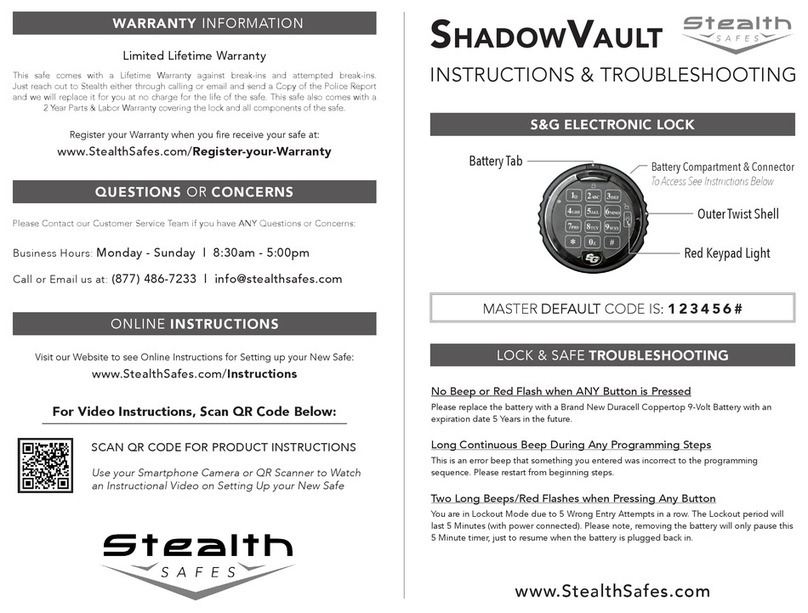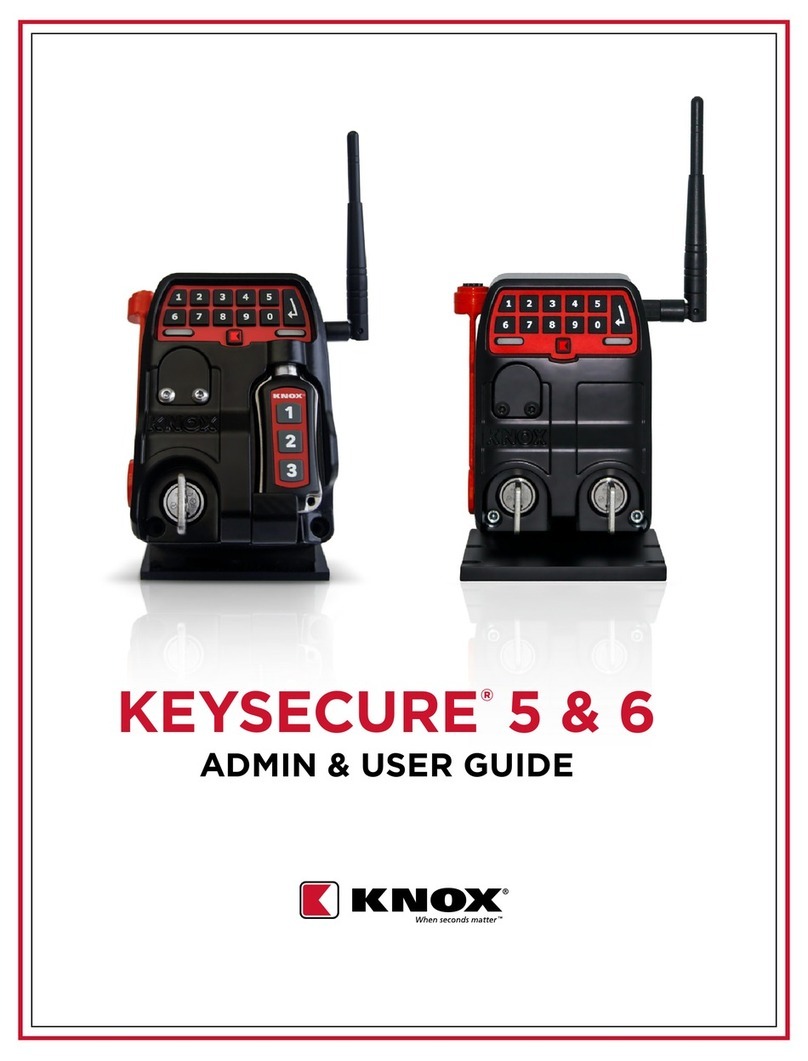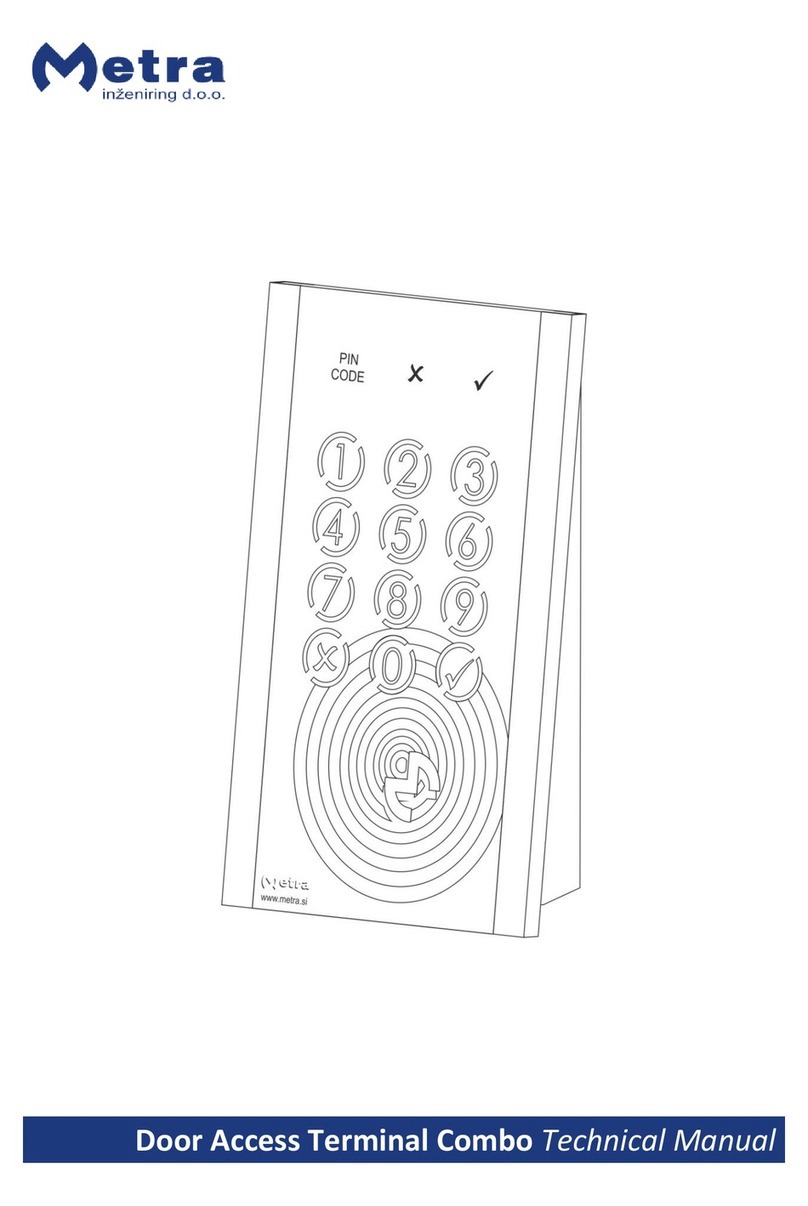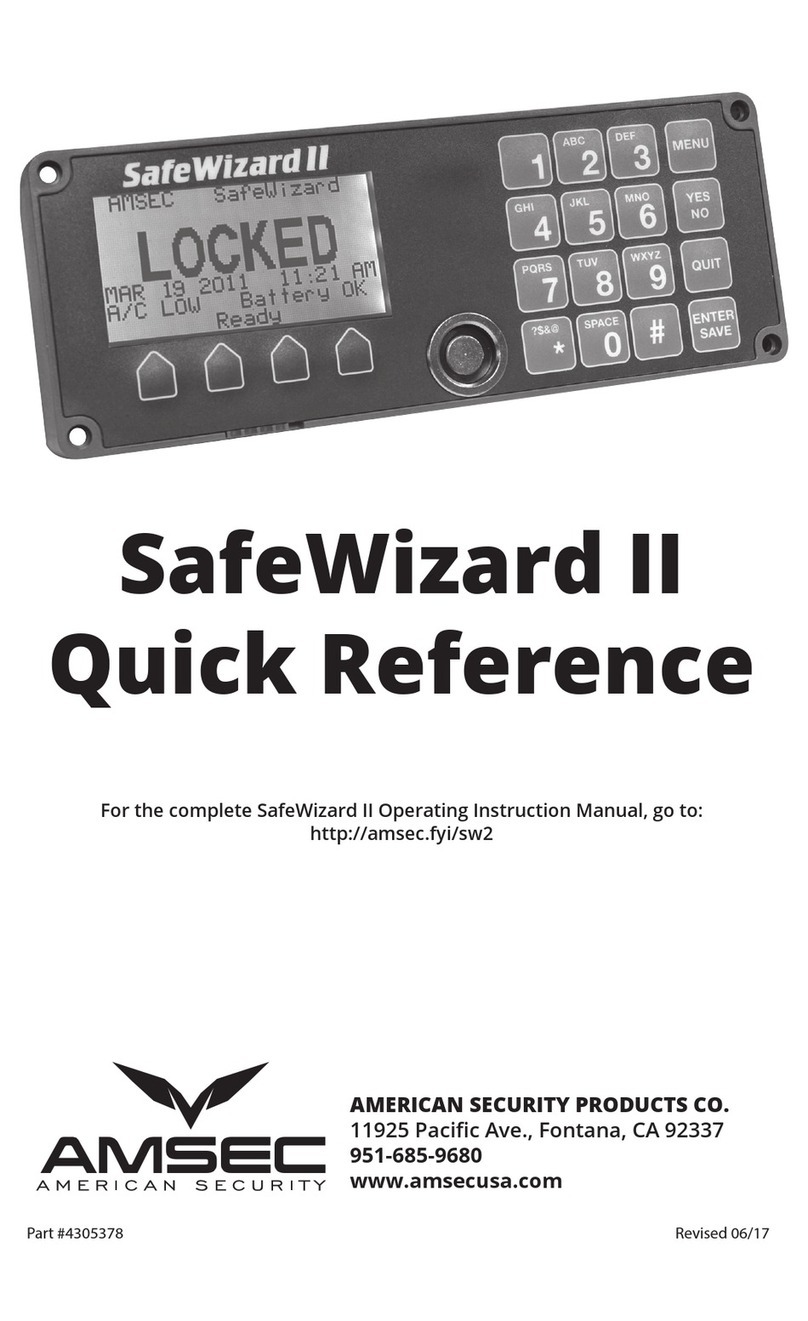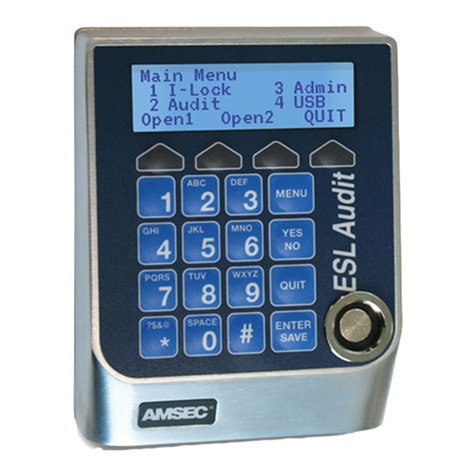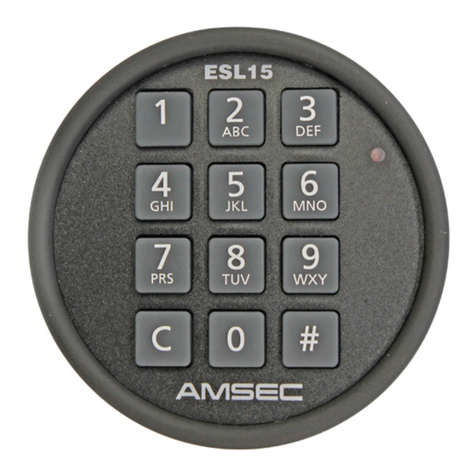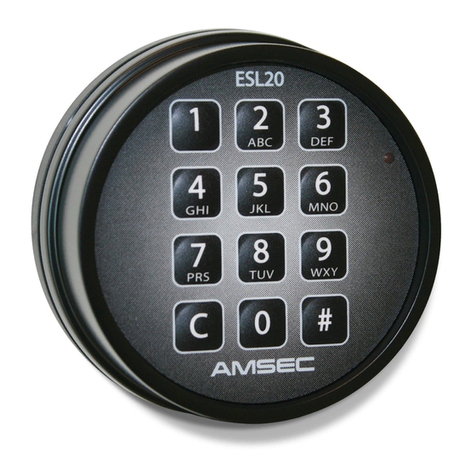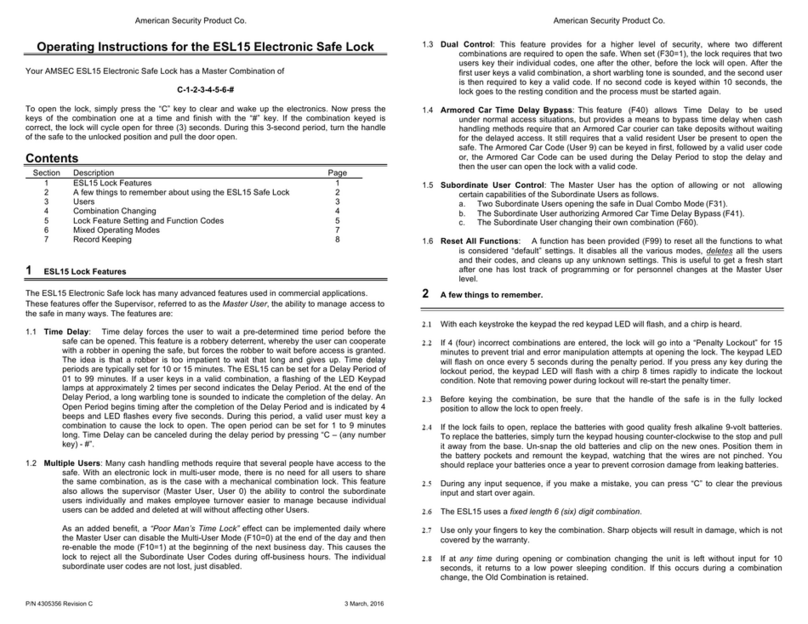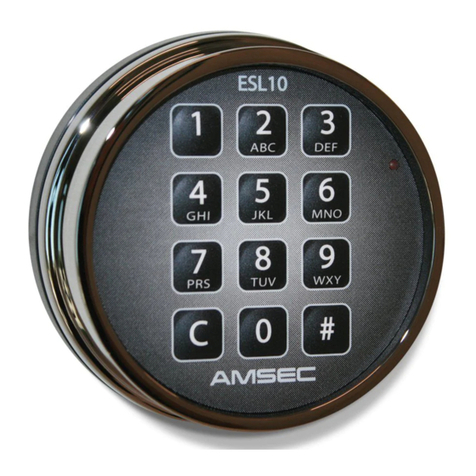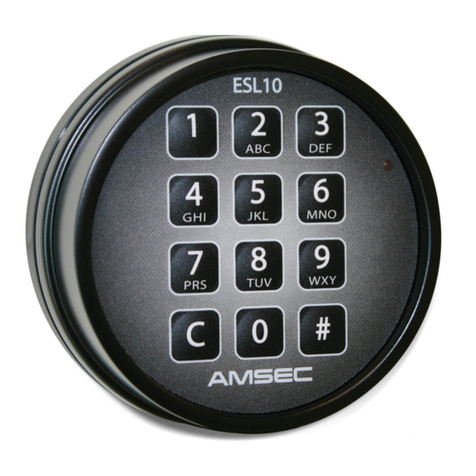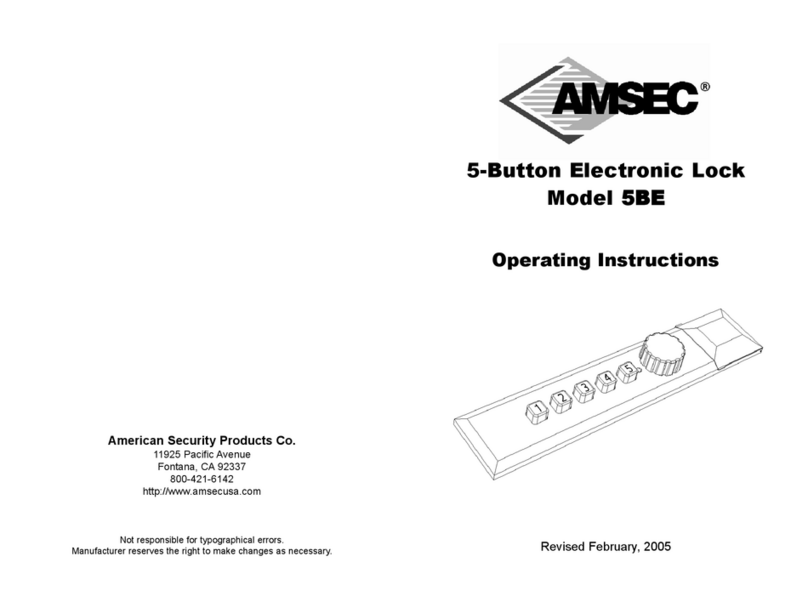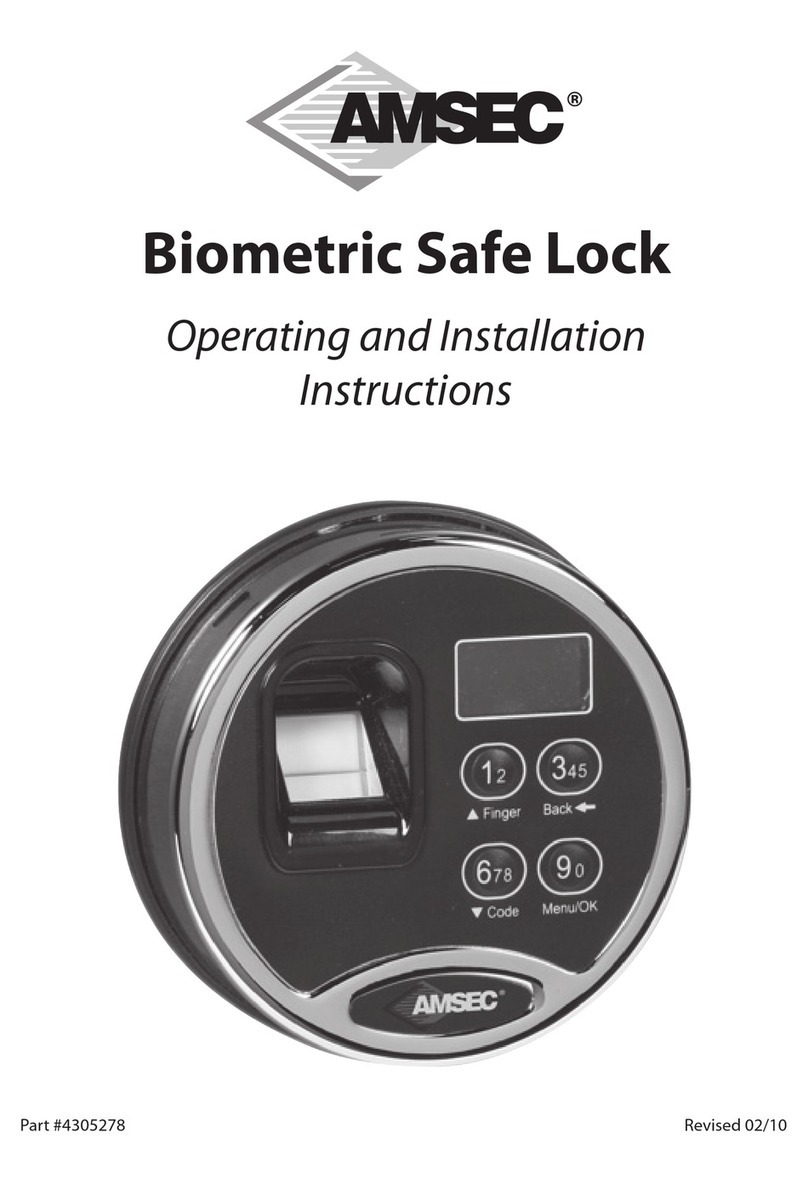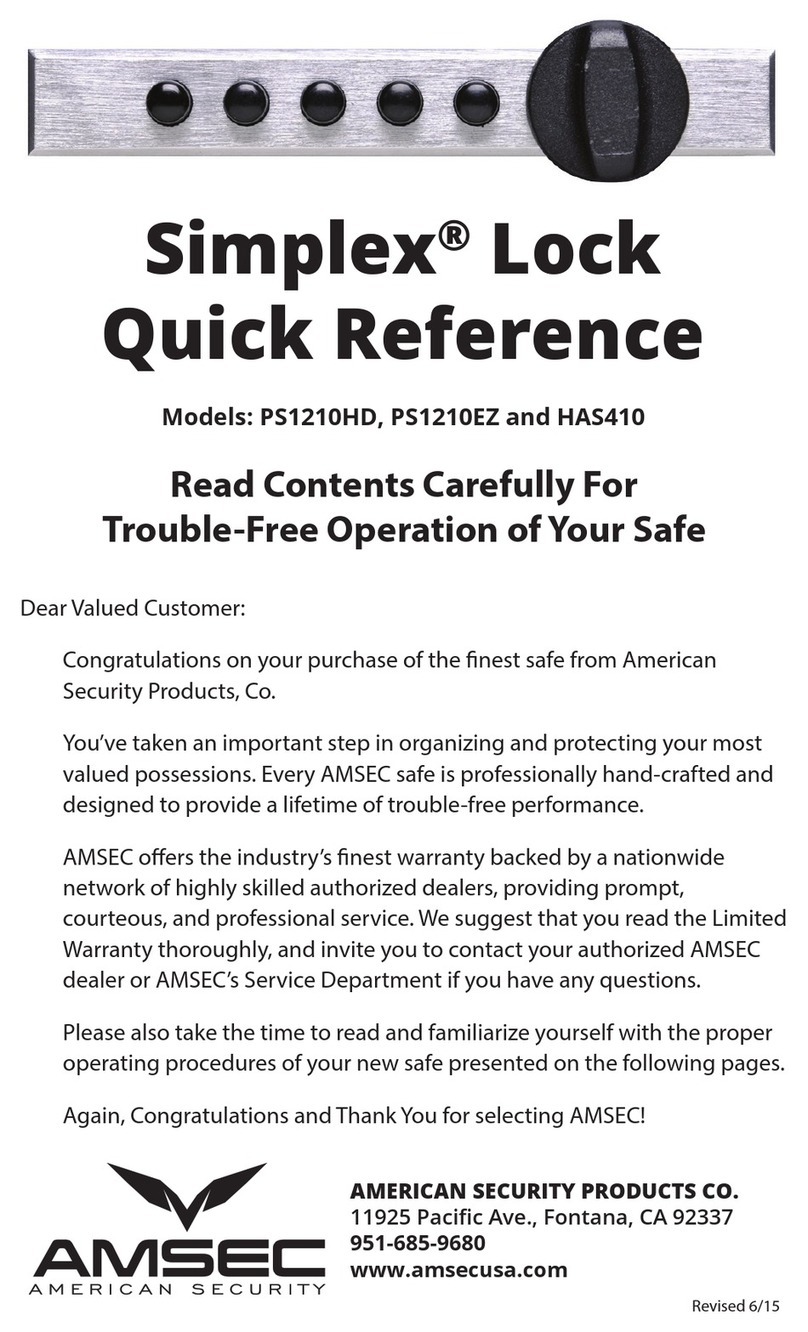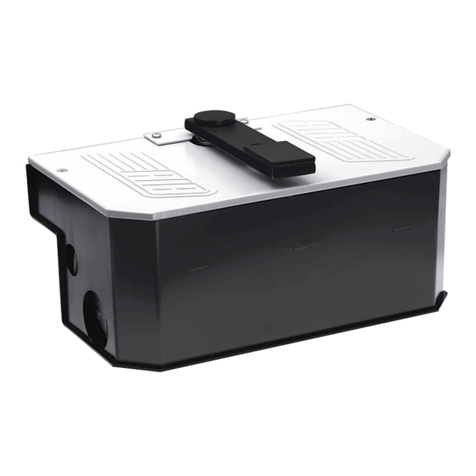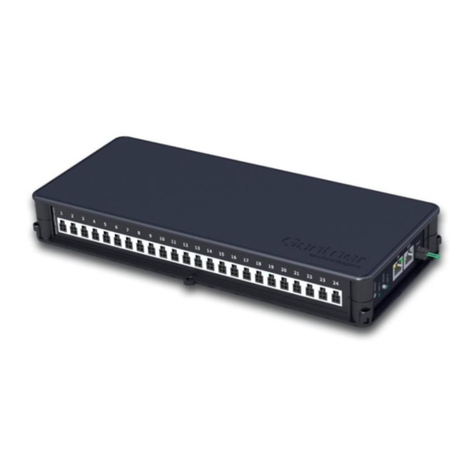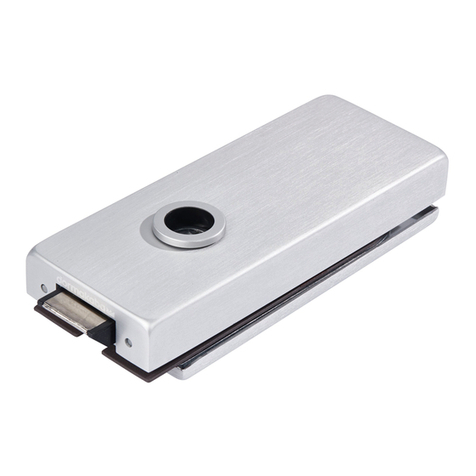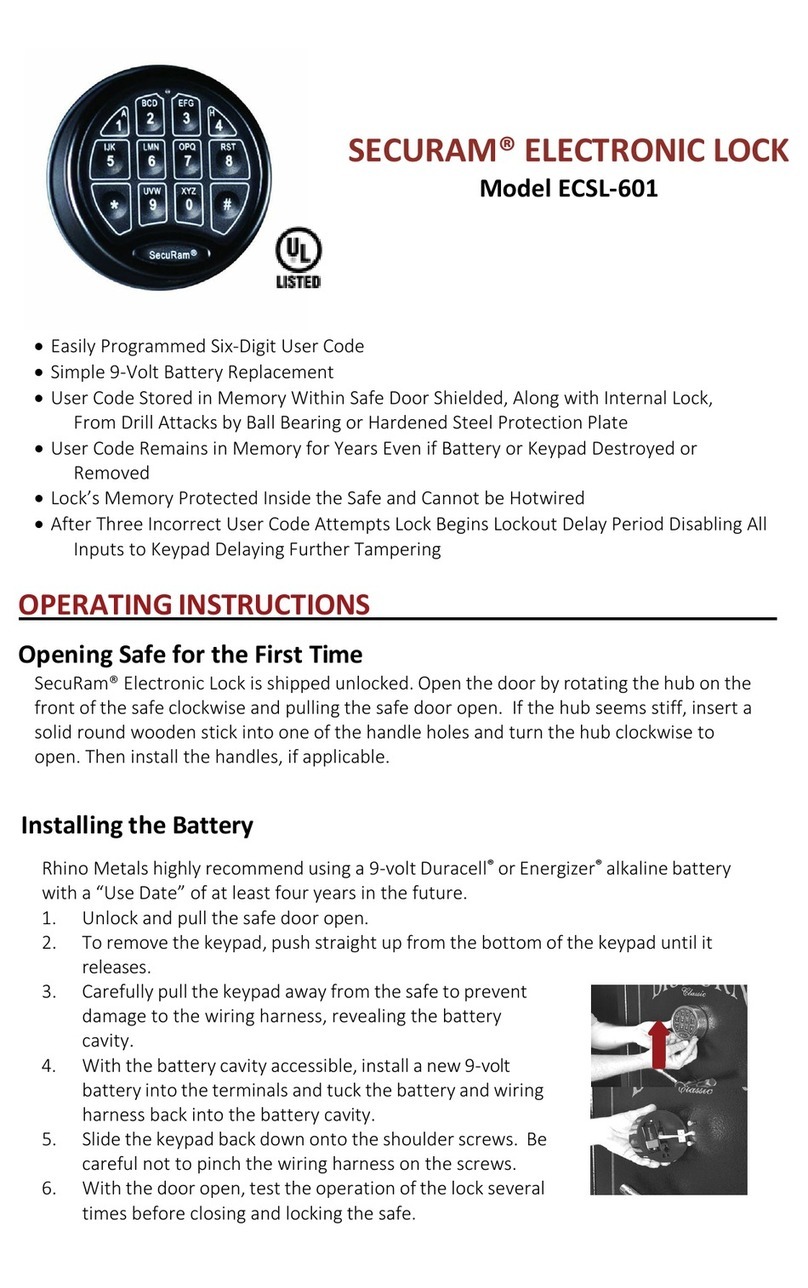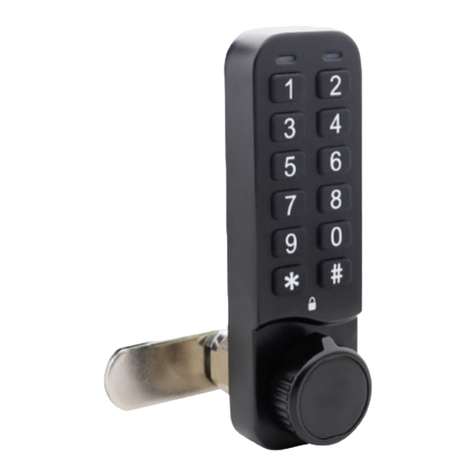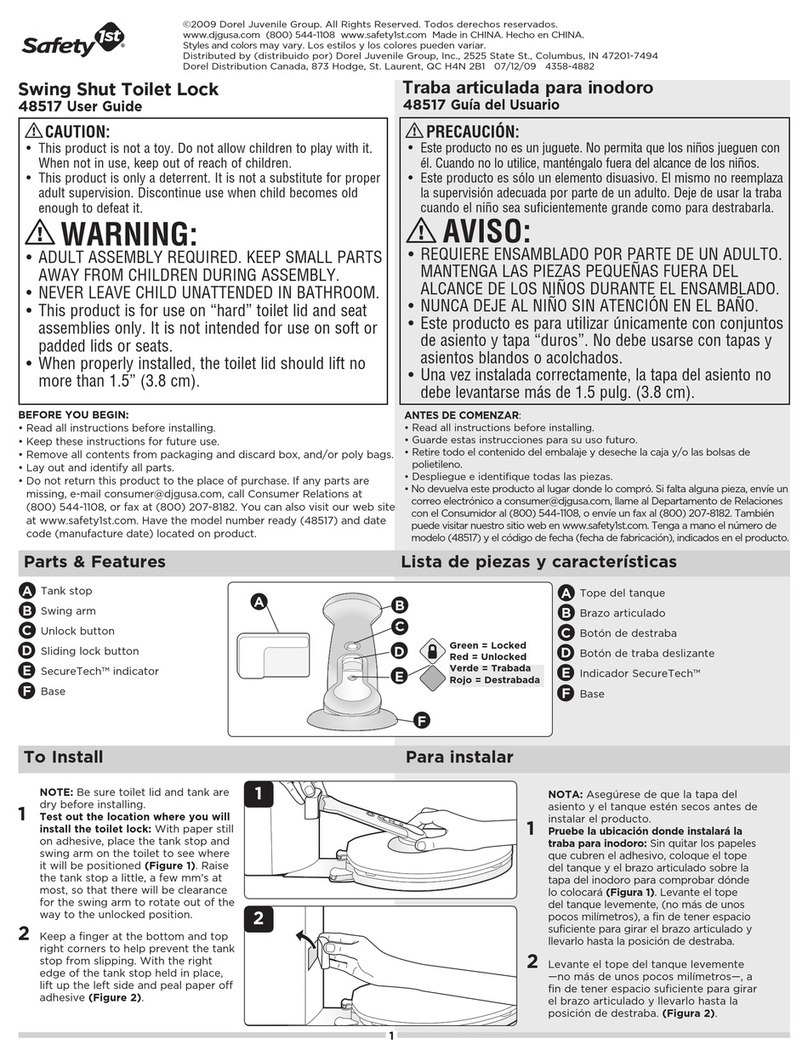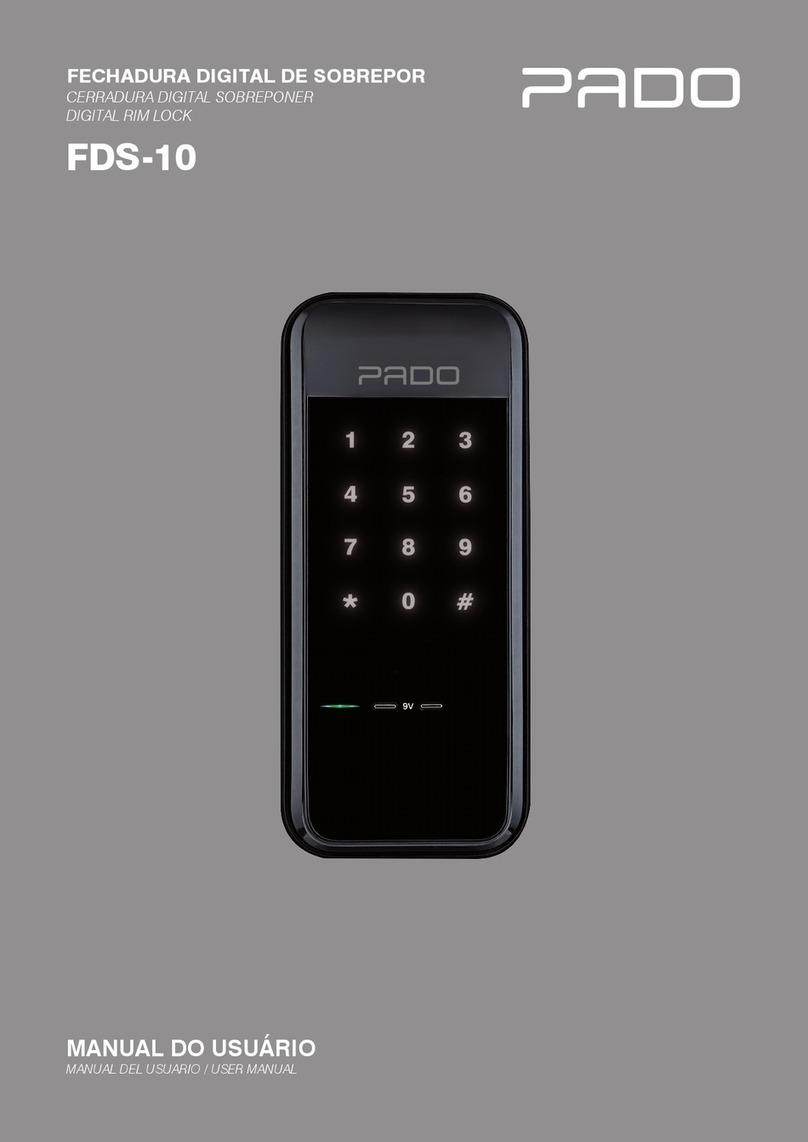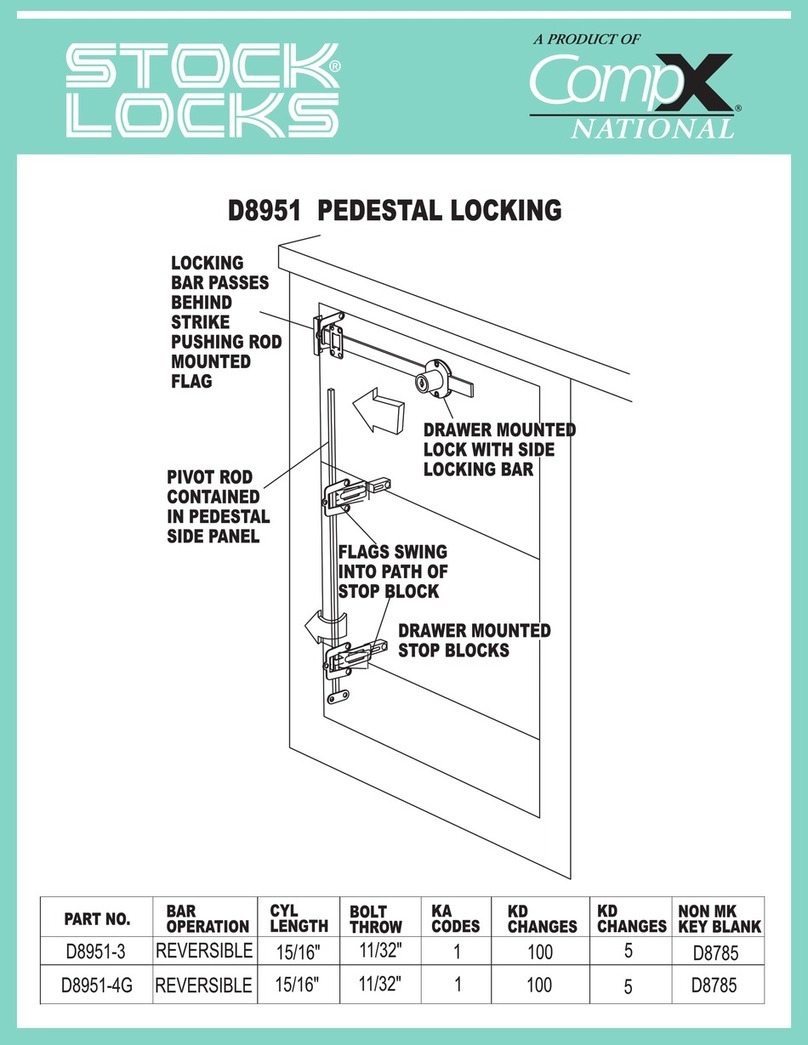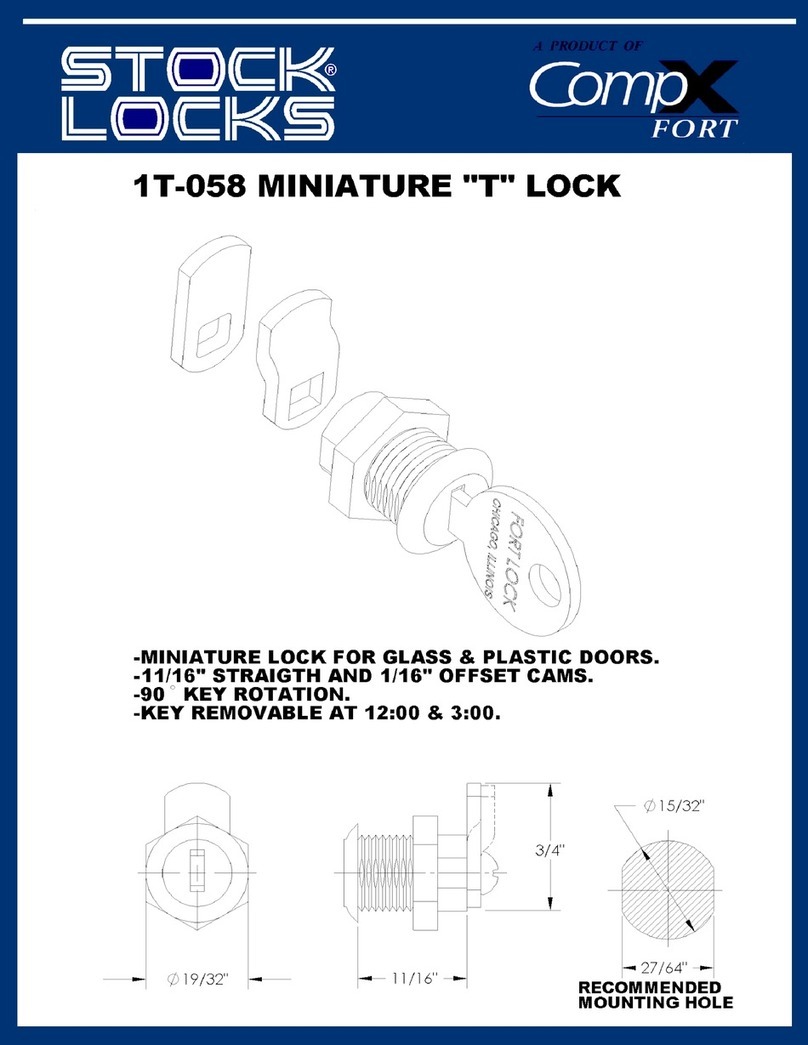
American Security Products Co. ESL20XL Operating Instructions Released Aug. 9, 2018
Revision A Page 5 of 10
Combination Changes in Multi-User Mode
One of the strengths of an electronic safe lock is the quick and easy changing of the combination(s). This adds to security
because you can change it at will if you suspect your combination is known by others.
The combination change method for the primary User (Master User) can be done two ways, with or without a User
Number. All combination changes require and authorization code and two entries of the new combo.
o In the event that F60 (Subordinate Combo Change) is set to Disable (F60=0), only the Master Code can
authorize a code change for a Subordinate User.
o Each Subordinate User is assigned a single digit “User Number” (1 thru 8) during enrollment by the
Master User. Master User is User 0. Armored Car User is User 9.
Master User Code change - At any time, the Master User combo can be changed by keying:
C - # - (Old Master Code) - # - (New Master Code) - # - (New Master Code) - #
User Code Change and F60=1 - Changing of any combination, including the Master User Code, can be
changed by the following sequence:
C- # - (User No.) - # - (Old User Code) - # - (New User Code) - # - (New User Code) - #
User Code Change and F60=0 - In the event F60 is Disabled (F60=0) or you are adding a new User, then the
combo change must be authorized with the Master User’s code:
C- # - (User No.) - # - (Master Code) - # - (New User Code) - # - (New User Code) - #
Feature Setting with Function Codes.
The ESL20XL’s advanced features are controlled only by the Master User, and are set using Function Codes.
A function can be turned on and off, or set, using the Function Code with the Master User code as authorization
for changing or setting the function. A Function Code is a 2-digit code that is associated to a particular setting.
Each Function Code has a default, or standard setting, which is in the lock when there have been no changes
or after a Function Reset (F99) has been executed. They are as follows.
FunctionCodeList Enable=1,Disable=0
Function
Function Description
Settin
Range
Default
01 Time Delay Mode Enable/Disable 1 or 0
0
02
Set Time Delay Period 1 to 99 10
03
Set Open Period 1 to 9
5
10 Multiple User Mode Enable/Disable 1 or 0
0
11
Add/Enable a User Combo 1 to 8
12
Disable a User Combo 1 to 8
13
Disable All Users
1
20 Duress Mode Enable/Disable 1 or 0
0
30 Dual Combo Mode Enable/Disable 1 or 0
0
31
Enable/Disable Two Subordinate Combos Openin
1 or 0
0
40
rmored Car Time Delay Bypass Enable/Disable 1 or 0
0
41
Enable/Disable Subordinate Authorization of TDL Bypass 1 or 0
1
50 External Control Port Enable/Disable 1 or 0
0
60 Subordinate User Combo Chan
e Enable/Disable 1 or 0
1
99 Reset All Functions to Default settin
s
1
CombinationChangeExamples
The Master Combo is 159260 and you wish to change it to 918273. Do the following:
C-#-0-#-159260-#-918273-#-918273-# or C-#-159260-#-918273-#-918273-#
User 5’s combination is 342312 and you wish to change it to 768798
C-#-5-#-342312-#-768798-#-768798-#
User 5’s combination is unknown and you wish to set it to 768798, the Master Combo is 159260
C-#-5-#-159260-#-768798-#-768798-#

